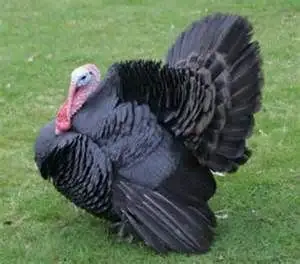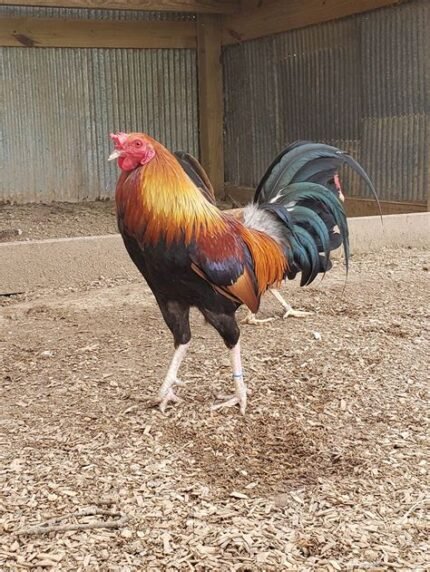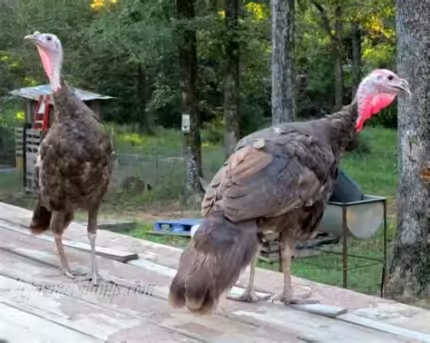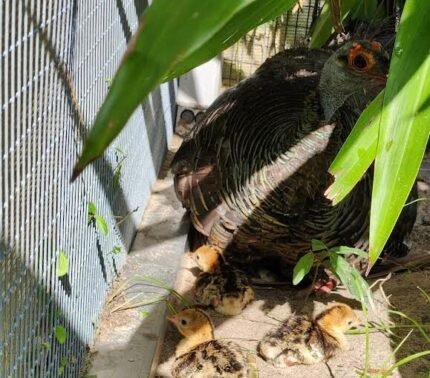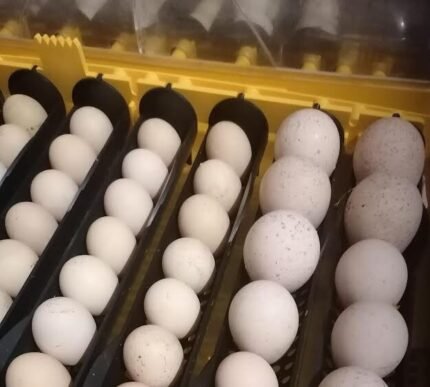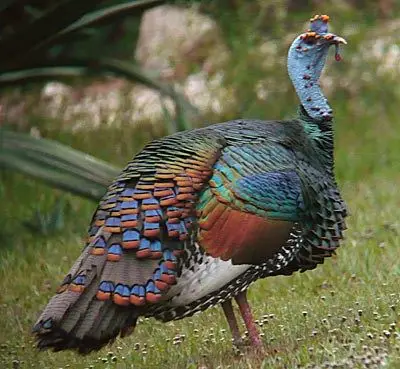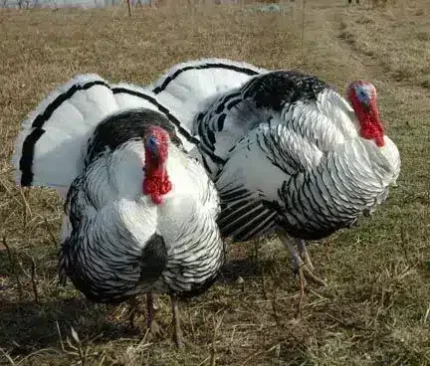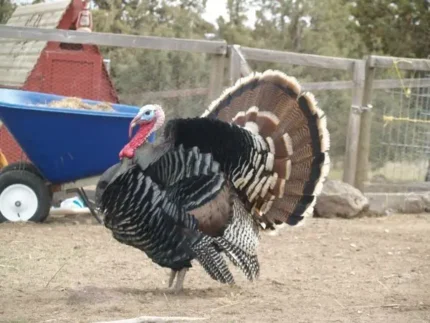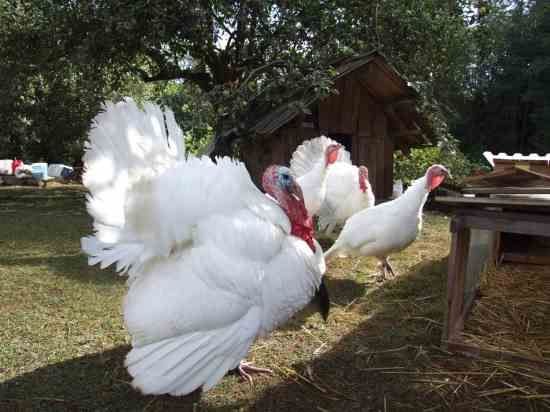
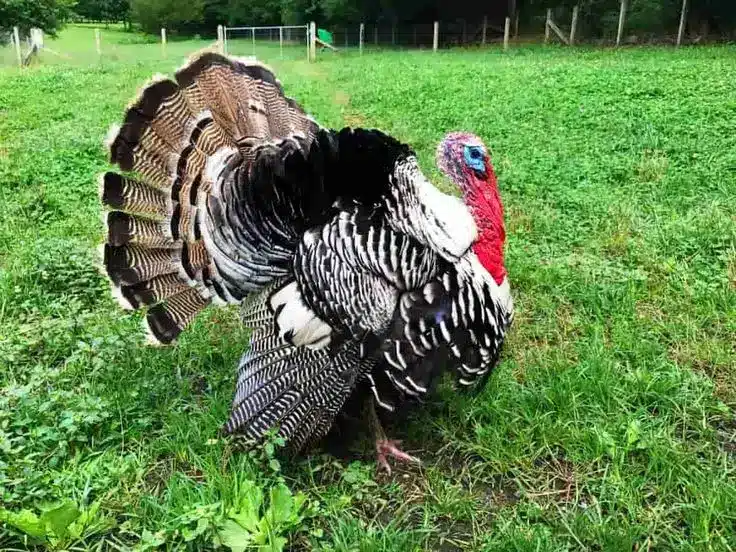
Black Spanish Turkeys
$20.00 – $200.00Price range: $20.00 through $200.00
The Ultimate Guide to Black Spanish Turkeys: Traits, Rearing, Flavor, and Heritage Insights
Black Spanish Turkey few heritage poultry breeds boast the captivating iridescent plumage, gentle nature, and exceptional meat quality of the Black Spanish Turkey, making them a prized choice for homesteaders and eco-conscious farms. This guide offers a deep dive into Black Spanish turkeys—exploring their lineage, detailing essential care, examining their meat and egg qualities, contrasting them with commercial breeds, and highlighting conservation efforts. You’ll uncover their origins and physical characteristics, best practices for raising young poults and housing adults, the unique flavor profiles and cooking techniques, their egg-laying habits and breeding potential, their conservation status with heritage organizations, side-by-side breed comparisons, and advice on acquiring poults and hatching eggs. By the end, you’ll be fully equipped to raise, protect, and cherish this heritage turkey with confidence.
What Exactly Are Black Spanish Turkeys? An Overview and Key Traits
Black Spanish Turkeys are a distinguished heritage breed of domestic turkey, recognized by their lustrous black feathers with a striking metallic green sheen, their placid foraging demeanor, and their natural mating capabilities that support sustainable flock regeneration. Originating in the 1500s from Mexican turkeys brought to Spain, these birds later journeyed to England (Norfolk) and then back to North America, evolving into a distinct genetic line valued for exhibition, meat quality, and adaptability. Their moderate size, distinctive appearance, and slower growth rate make them perfectly suited for free-range environments, while their recognition by the American Poultry Association and “Watch” status by The Livestock Conservancy underscore their cultural and conservation significance. Understanding these fundamental attributes lays the groundwork for our detailed exploration of their care, culinary uses, and preservation.
Where Do Black Spanish Turkeys Come From? Their Origin and History
The Black Spanish Turkey’s lineage traces back to the wild turkey domesticated by the Aztecs in Mexico. Early explorers transported these birds to Spain, where they were selectively bred for their glossy black plumage and hardiness. English breeders in Norfolk further refined the breed in the 1700s, stabilizing key traits before reintroducing them to Colonial America. There, cross-breeding with Eastern wild turkeys enhanced their vigor and size. This transatlantic journey resulted in a heritage bird rich in genetic diversity, steeped in historical significance, and enduringly popular among poultry enthusiasts. The breed’s storied past continues to inform current conservation initiatives and the messaging of heritage organizations.
What Are the Defining Physical Features and Plumage of Black Spanish Turkeys?
Black Spanish Turkeys showcase a uniform, deep black feather coat, beautifully accented by an iridescent green or bronze sheen when caught by sunlight. They possess broad tail fans and sturdy wing quills that allow for modest flight. Their heads and necks typically display sparse blue-gray skin, adorned with red wattles and a slender snood. Shanks range from steel blue to black, terminating in strong toes well-suited for scratching. Primary flight feathers are edged in slate gray, and the juvenile molt pattern transitions from light bronze-speckled down to mature black plumage by approximately 20 weeks of age. Their metallic coloration and structural symmetry make this breed a standout specimen at poultry exhibitions.
How Does the Temperament of Black Spanish Turkeys Influence Their Care?
Black Spanish Turkeys are known for their calm, curious, and non-aggressive disposition, which greatly simplifies handling, integration with other poultry, and free-range management. Their inquisitive nature encourages active foraging for insects and pasture greens, thereby reducing supplemental feed costs and enhancing pasture health. Gentle flock dynamics minimize stress-related injuries, although occasional flightiness in response to sudden noises necessitates secure nighttime shelters. Their balanced temperament contributes to low-stress brooding and stable mature flocks, guiding decisions on housing and predator protection strategies.
What is the Typical Size and Growth Rate of Black Spanish Turkeys?
Black Spanish Turkeys reach market weight at a more leisurely pace compared to commercial breeds, allowing for natural muscle development and flavor maturation without the need for forced feeding.
| Age (Weeks) | Tom Weight Range | Hen Weight Range |
|---|---|---|
| 8 | 12–14 lbs | 6–8 lbs |
| 16 | 18–22 lbs | 10–12 lbs |
| 26 (Mature) | 25–33 lbs | 14–18 lbs |
Their gradual growth over 24–28 weeks supports sustainable breeding cycles and natural mating, a stark contrast to rapid-grow commercial varieties that often require artificial insemination. This slow-growth profile is fundamental to their superior meat quality and highlights their heritage status.
How to Raise Black Spanish Turkeys: A Complete Care and Management Guide
Successfully raising Black Spanish Turkeys, from day-old poults to mature breeders, depends on precise brooding conditions, appropriate housing, balanced nutrition, and proactive health measures to safeguard their heritage genetics and ensure bird welfare. The following details best practices for robust development, minimizing disease risks, and optimizing free-range integration for homesteaders and small-scale producers.
What Are the Best Practices for Brooding and Caring for Black Spanish Turkey Poults?
Effective brooding for Black Spanish poults requires maintaining a heat lamp environment at 95°F during the first week, gradually reducing the temperature by 5°F each subsequent week until ambient temperatures reach 70°F. Provide clean pine-shaving bedding, draft-free enclosures, and a chick starter feed with 28% protein for the initial six weeks. Ensure constant access to fresh water, supplemented with electrolytes for the first 48 hours to support hydration and gut health. Attending to uniform growth and active behavior early on fosters sturdy poults ready for their transition to free-range living.
How Should You House and Manage Adult Black Spanish Turkeys?
Adult Black Spanish Turkeys thrive in coops that offer at least 10 square feet per bird, elevated roosts to prevent dampness from ground-roosting, and deep-litter bedding to absorb moisture and encourage natural scratching behaviors. Secure, predator-resistant fencing, at least five feet high with a buried apron, deters threats like foxes and raccoons. Rotational pasture paddocks help preserve ground cover while limiting parasite buildup, and sheltered, rain-proof runs provide dry areas for loafing. Consistent bedding renewal and ample ventilation are crucial for reducing respiratory issues and maintaining flock health.
What Diet and Nutrition Support Healthy Growth in Black Spanish Turkeys?
A balanced feeding plan tailored to each life stage is essential:
- Starter (0–8 weeks): A 28% protein medicated mash to bolster immune development.
- Grower (8–16 weeks): A 20% protein feed with balanced amino acids, plus added grit for gizzard function.
- Finisher (16–26 weeks): A 16% protein ration enriched with niacin to support leg health.
- Free-range forage: Access to grasses, legumes, and insects supplements essential vitamins and minerals.
A well-rounded diet is key to preventing leg deformities, enhancing feather quality, and sustaining steady weight gain, preparing the birds for breeding or harvest.
How to Protect Black Spanish Turkeys from Common Diseases and Predators?
Preventive health management involves a combination of vaccination protocols (for Newcastle and Marek’s Disease), regular fecal monitoring for coccidiosis, and strategic deworming every 8–10 weeks. Clean feeders and waterers weekly, rotate pastures to disrupt parasite cycles, and avoid overstocking to minimize disease transmission. Install hardware cloth around coop perimeters and utilize motion-activated lights to deter nocturnal predators. Early detection of lethargy, decreased appetite, or loose droppings allows for prompt intervention and safeguards flock productivity.
What Makes Black Spanish Turkey Meat Unique? Flavor Profile and Cooking Tips
Black Spanish Turkey meat is distinguished by its firm yet tender dark meat, rich umami depth, and moderate fat content, reflecting their natural growth cycles and active foraging habits. These qualities result in succulent roast birds and versatile cuts highly valued by chefs and traditional food enthusiasts seeking authentic heritage flavor.
How Does Black Spanish Turkey Meat Flavor Compare to Commercial Breeds?
Heritage Black Spanish Turkey meat offers a pronounced savory character with subtle gamey undertones and a robust texture, in contrast to Broad Breasted White varieties, which often present a milder flavor and higher moisture content. The active muscle development in free-range birds enhances the depth of flavor, while their slower growth promotes consistent marbling without excessive fat. This distinct contrast positions Black Spanish Turkey as a premier choice for roasting and slow-cooking applications.
What Are the Best Cooking Methods for Black Spanish Turkey Meat?
Ideal preparation methods for Black Spanish Turkey include:
- Low-and-slow roasting at 325°F to maintain the succulence of dark meat cuts.
- Smoking over fruitwood for 3–4 hours to deepen the smoky umami notes.
- Braising thigh meat in wine or broth to tenderize connective tissues.
- Stewing carcass remnants to create a rich, heritage-style stock.
What Nutritional Benefits Does Black Spanish Turkey Meat Offer?
Here’s a nutrient comparison per 3 oz serving of cooked dark meat:
| Nutrient | Amount | Role |
|---|---|---|
| Protein | 23 g | Muscle repair and immune support |
| Iron | 1.5 mg | Oxygen transport and energy metabolism |
| Niacin (B3) | 8 mg | Nervous system function and digestion |
| Selenium | 28 µg | Antioxidant defense and thyroid health |
What Are the Egg-Laying Characteristics of Black Spanish Turkeys?
Black Spanish Turkeys provide moderate egg production, characterized by exceptional egg size and high hatchability, which supports ongoing breeding programs while contributing to farmer self-sufficiency and conservation efforts.
How Many Eggs Do Black Spanish Turkeys Typically Lay, and What Do They Look Like?
A healthy hen typically lays 80–100 large, off-white eggs with light brown speckling annually, often starting as early as eight months of age. The shells measure approximately 3.0 in × 2.3 in, and each egg averages about 3.5 oz. Their substantial egg size contributes to early chick vitality and efficient hatchery operations.
How Fertile Are Black Spanish Turkey Eggs, and What Is Their Hatching Success Rate?
Fertility rates for Black Spanish Turkey eggs consistently exceed 85% under proper breeding conditions. Hatching success typically ranges from 75% to 90% when incubated at 99.5°F with 55%–60% relative humidity. Careful candling at day 25 helps identify viable embryos, allowing for timely intervention. High fertility and hatch rates reinforce the breed’s value for heritage program sustainability.
Can Black Spanish Turkeys Be Used for Sustainable Breeding Programs?
Absolutely. Black Spanish Turkeys are exceptionally well-suited for on-farm conservation breeding due to their natural mating behavior, propensity for broodiness, and strong maternal instincts. Implementing rotational breeding pens, meticulous pedigree tracking, and selective pairing helps maintain genetic diversity. This approach preserves heritage lines and supports population growth without relying on commercial genetics.
Why Are Black Spanish Turkeys Important for Conservation? Heritage Status and Preservation Efforts
Black Spanish Turkeys represent a living genetic archive of early turkey domestication. Their protection under heritage programs is vital for safeguarding biodiversity and agricultural heritage for future generations.
What Is the Conservation Status of Black Spanish Turkeys According to The Livestock Conservancy?
The Livestock Conservancy classifies Black Spanish Turkeys as “Watch,” signifying fewer than 5,000 breeding birds in North America and an ongoing risk of genetic erosion. This designation encourages breeders to register their flocks, share breeding stock, and meticulously track lineage to stabilize population numbers.
Recent conservation initiatives and breed census data underscore the critical importance of such designations.
Black Spanish Turkey Breed Census and Conservation in the United StatesThe ALBC census indicated that only eight of the 25 total seasonal hatcheries maintain breeding flocks, comprising 7,038 Bronze, 4,600 Large Whites, 664 Bourbon Reds, 381 Royal Palms, 62 Black, 60 Slate, 4 White Holland, and 3 Narragansett hens. The SPPA research encompassed hatcheries and private breeders, including both males and females, and also considered any variety deemed by the breeder. The census figures for the various varieties were: Bourbon Red 931, Royal Palm 717, Bronze 365, Black 211, White Midget 151, Slate 143, Narragansett 87, Buff 62, White Holland 38, Auburn 27, Lilac 24, Silver Auburn 19, Chocolate 12, Royal Nebraskan 8, Wisconsin 6, Spotted Neb.Turkey conservation in the United States, P Johnson, 2000
How Does the American Poultry Association Recognize and Support Black Spanish Turkeys?
Since 1874, the American Poultry Association has included the Black Spanish Turkey in its Standard of Perfection, establishing clear conformation criteria for exhibition and breed purity. APA-sanctioned shows serve to elevate public awareness, foster breeder connections, and uphold quality benchmarks that guide responsible propagation.
How Can Individuals Contribute to the Conservation of Black Spanish Turkeys?
Enthusiasts can actively contribute to safeguarding the breed by acquiring heritage poults or hatching eggs, joining dedicated breeder associations, meticulously documenting pedigrees, and sharing surplus stock with fellow stewards. Supporting educational workshops, donating to preservation funds, and featuring heritage turkey dishes at local events amplifies public engagement and secures vital funding for conservation initiatives.
How Do Black Spanish Turkeys Compare to Other Heritage and Commercial Turkey Breeds?
Understanding how Black Spanish Turkeys measure up against both commercial and other heritage breeds empowers farmers in their decisions regarding breed selection, farm objectives, and market positioning.
What Are the Differences Between Black Spanish Turkeys and Broad Breasted White Turkeys?
| Feature | Black Spanish Turkey | Broad Breasted White Turkey |
|---|---|---|
| Growth Rate | Slow (24–28 weeks to maturity) | Fast (18–20 weeks to maturity) |
| Natural Mating | Yes | No (requires artificial insemination) |
| Plumage | Iridescent black | Solid white |
| Meat Flavor | Rich, gamey depth | Mild, high moisture |
| Conservation Status | “Watch” heritage breed | Commercial standard |
How Do Black Spanish Turkeys Compare with Other Heritage Breeds Like Bourbon Red and Narragansett?
Black Spanish Turkeys feature darker plumage, leaner dark meat, and more active foraging habits compared to the Bourbon Red’s chestnut hue or the Narragansett’s slate-banded pattern. The Bourbon Red typically yields a milder flavor profile and possesses a larger frame, while the Narragansett offers a balance of moderate growth with pastel feathering. Black Spanish Turkeys distinguish themselves through their exhibition uniformity, natural hardiness, and distinctive iridescence.
What Advantages Do Black Spanish Turkeys Offer for Free-Range and Sustainable Farming?
Their inquisitive foraging behavior naturally reduces feed costs, while their ability for natural mating and brooding eliminates the need for incubators. Their hardiness in varied climates and calm temperament simplify pasture rotation, and their genetic resilience enhances disease resistance. These combined attributes promote ecological balance, economic viability, and support conservation advocacy on small to mid-sized farms.
Where to Buy Black Spanish Turkey Poults and Hatching Eggs? Tips for Purchasing and Early Care
Acquiring healthy Black Spanish Turkey poults or hatching eggs necessitates careful selection of reputable hatcheries, close attention to indicators of bird health, and thorough preparation of suitable brooding environments.
What Should Buyers Look For When Purchasing Black Spanish Turkey Poults?
Look for poults with bright, alert eyes, an upright posture, and clean down with uniform coloration. Confirm that day-old birds have received Marek’s vaccination, exhibit strong leg thrust, and respond actively to stimuli. Avoid orders showing signs of lethargy, soiled vents, or uneven sizes, as these can indicate potential health or shipping issues.
Historical data on turkey populations provides valuable context for understanding current conservation needs.
United States Turkey Breed Census: Black Turkey Population DataThe ALBC census indicated that only eight of the 25 seasonal hatcheries maintained breeding flocks. These flocks comprised 7,038 Bronze, 4,600 Large White, 664 Bourbon Red, 381 Royal Palm, 62 Black, 60 Slate, 4 White Holland, and 3 Narragansett hens. The SPPA research encompassed hatcheries and private breeders, including both males and females, and any variety designated by the breeder. The census figures for the various breeds were: Bourbon Red 931, Royal Palm 717, Bronze 365, Black 211, White Midget 151, Slate 143, Narragansett 87, Buff 62, White Holland 38, Auburn 27, Lilac 24, Silver Auburn 19, Chocolate 12, Royal Nebraskan 8, Wisconsin 6, and Spotted Neb.Turkey conservation in the United States, P Johnson, 1951
How to Care for Newly Purchased Black Spanish Turkey Poults?
Quarantine new arrivals in a dedicated brooder equipped with 24-hour heat lamp coverage, fresh water enriched with probiotics, and a 28% protein starter feed. Monitor ambient humidity at 50% to prevent dehydration, and promptly remove any chilled or weak poults to protect the main flock. Mark individual poults for growth tracking and adjust the temperature gradually as feathering develops.
Are Hatching Eggs Available, and What Are the Best Practices for Incubation?
High-quality Black Spanish Turkey hatching eggs should weigh between 3.3–3.7 oz, possess clean, undamaged shells, and arrive within seven days of being laid. Store eggs point-down at 55°F/75% humidity before setting them in an incubator at 99.5°F, rotating them three times daily until day 25. Maintain consistent ventilation, candle eggs at day 7 and day 18 to remove non-viable ones, and transfer viable eggs to a hatcher set at 98°F/65% humidity for the final 3 days.
Studies comparing different heritage turkey breeds offer valuable insights into their growth characteristics.
Comparative Growth Performance of White, Black, and Bronze Heritage TurkeysThis study investigated the comparative growth performance of White, Black, and Bronze heritage turkeys recently introduced in Bangladesh. The birds were raised under a semi-intensive system at the BAU Poultry Farm, supplemented with commercial broiler grower and layer feeds. The primary objectives were to assess the growth performance of locally available heritage turkeys under a semi-intensive rearing system and to propose turkey farming as a complementary component of the existing poultry industry in Bangladesh. A total of 46 unsexed poults, aged 5 weeks, comprising White, Black, and Bronze color types, were housed. The birds were managed under identical conditions, and feed was sourced from the local market. No statistically significant difference (p>0.05) in live weight was observed among the three color types. At the conclusion of the 21-week rearing period, Bronze turkeys achieved the highest average live body weight (3720.71g/bird), while White turkeys recorded the lowest (3282.29g/bird).Growth performance of white, black and bronze color heritage turkeys under semi-intensive system: Growth performance of heritage turkeys, SC Das, 2018
Raising Black Spanish Turkeys is a way to honor a centuries-old heritage breed whose striking appearance, natural reproduction capabilities, and deeply flavorful meat enrich sustainable farming and culinary traditions. By mastering their history, care requirements, culinary potential, breeding characteristics, and conservation needs, you actively contribute to preserving genetic diversity and cultural legacy. Whether comparing them to commercial strains or other heritage varieties, Black Spanish Turkeys consistently offer unique advantages for free-range environments and heritage enthusiasts. Embracing these practices ensures the continued stewardship and enjoyment of this remarkable heritage turkey breed.
| Quantity |
Male ,Female ,Chick |
|---|
